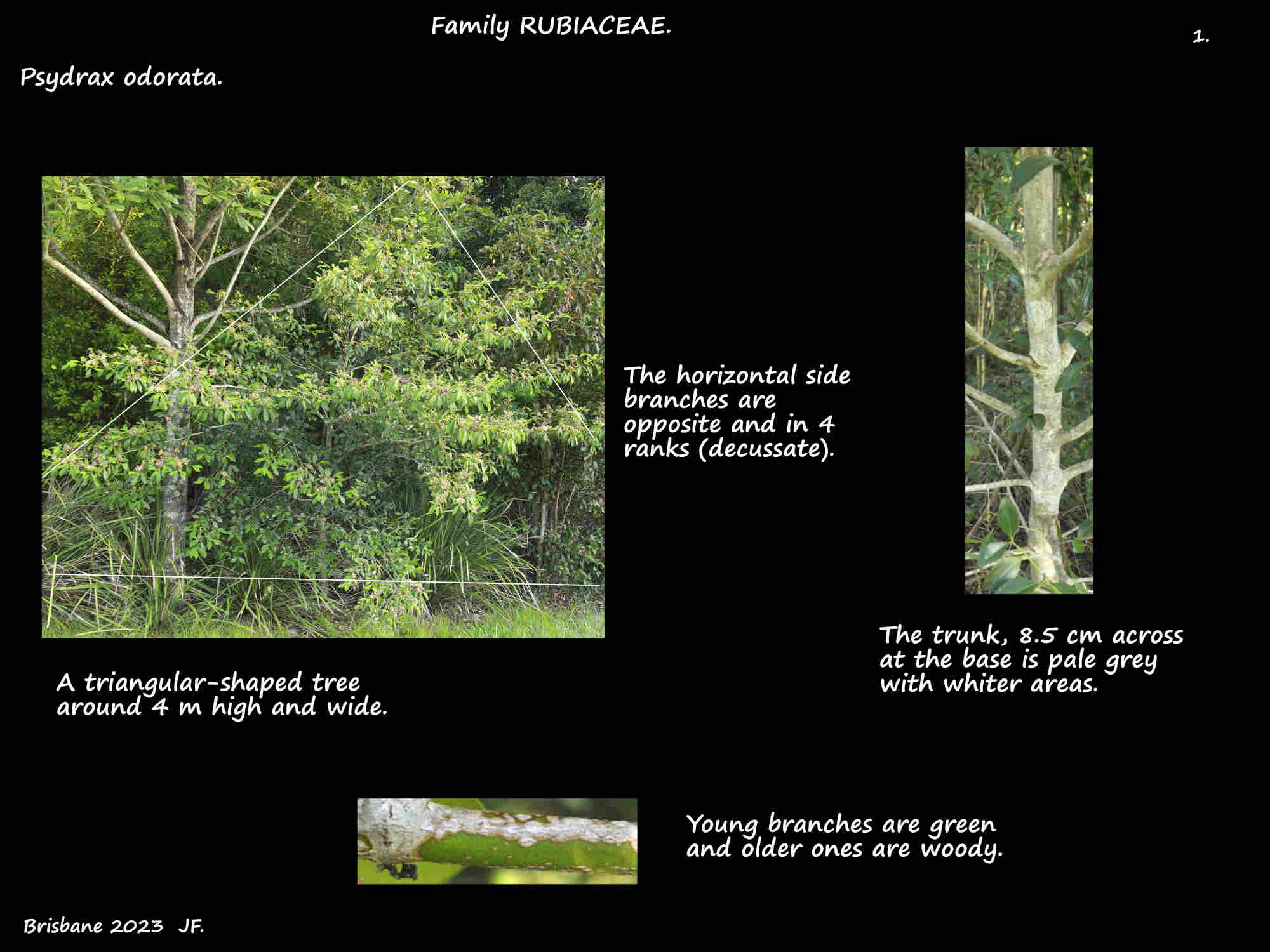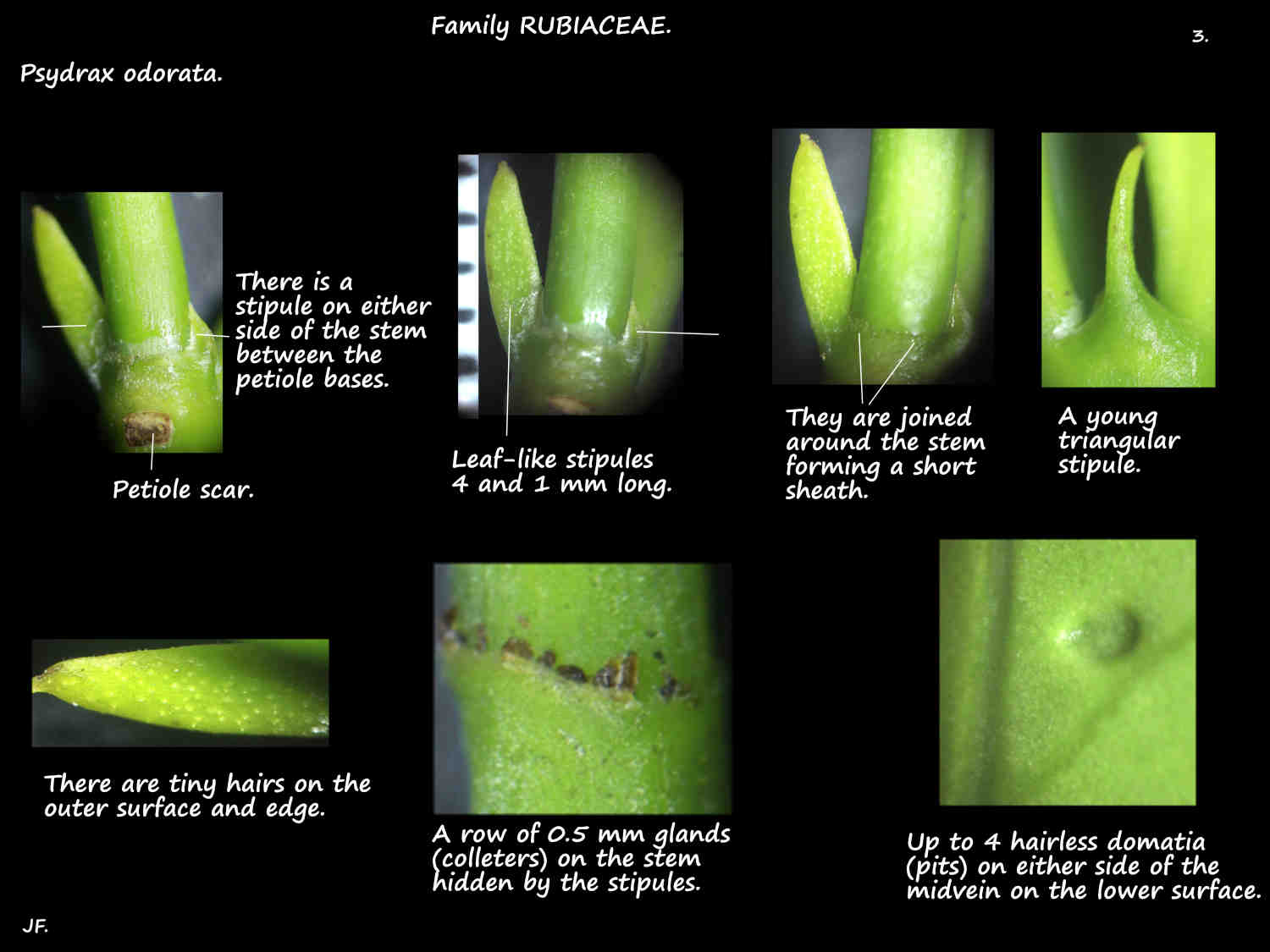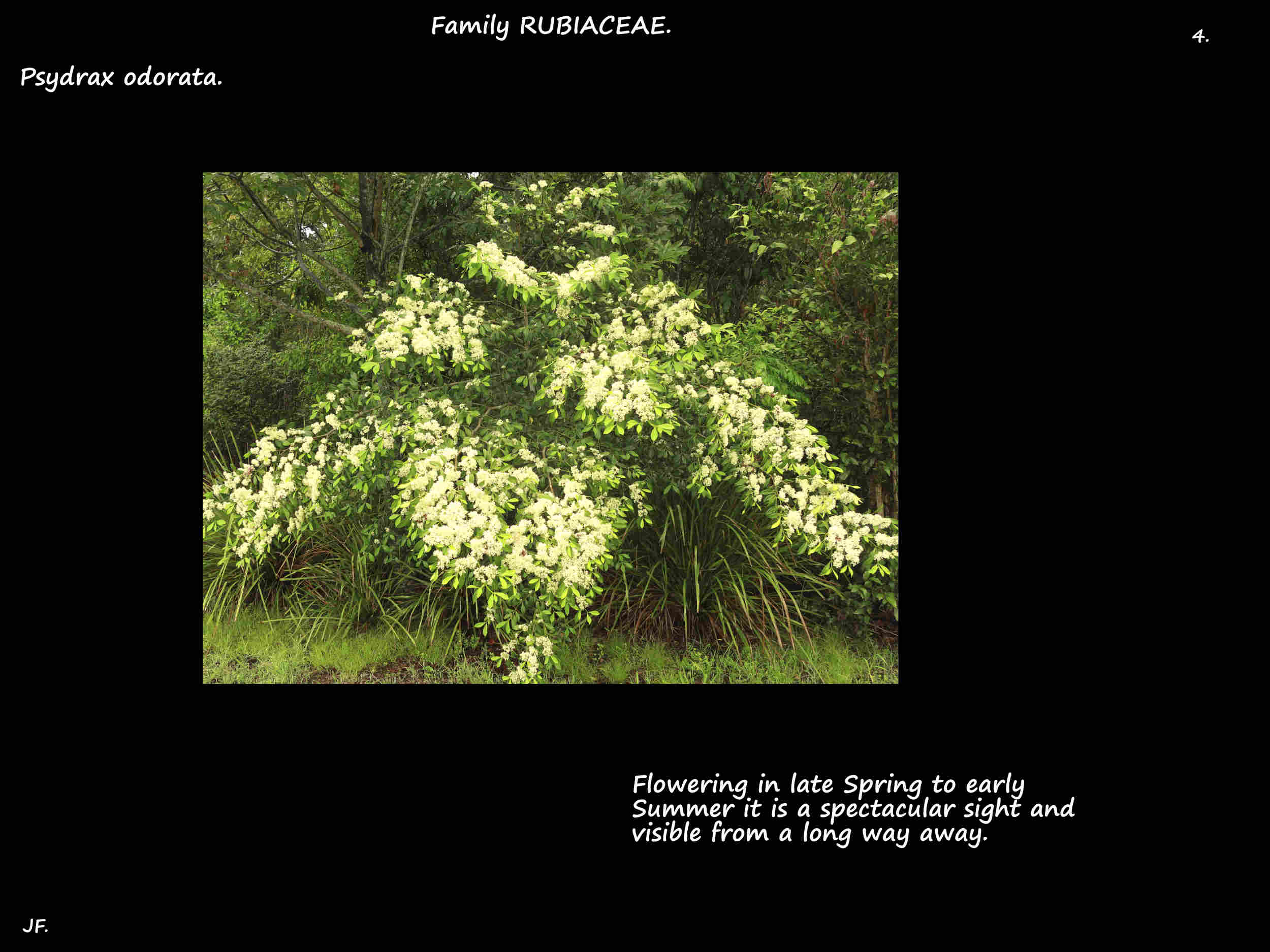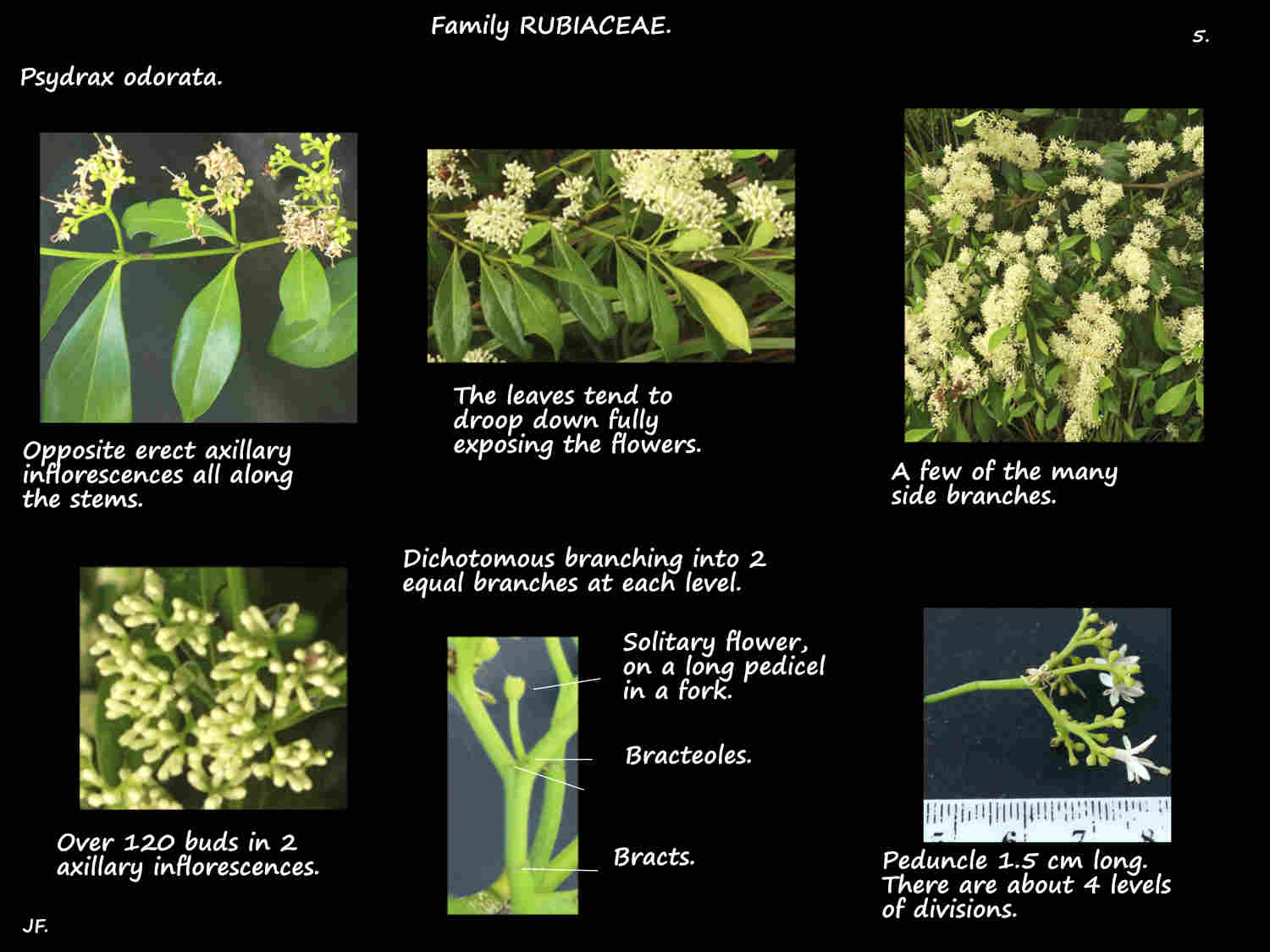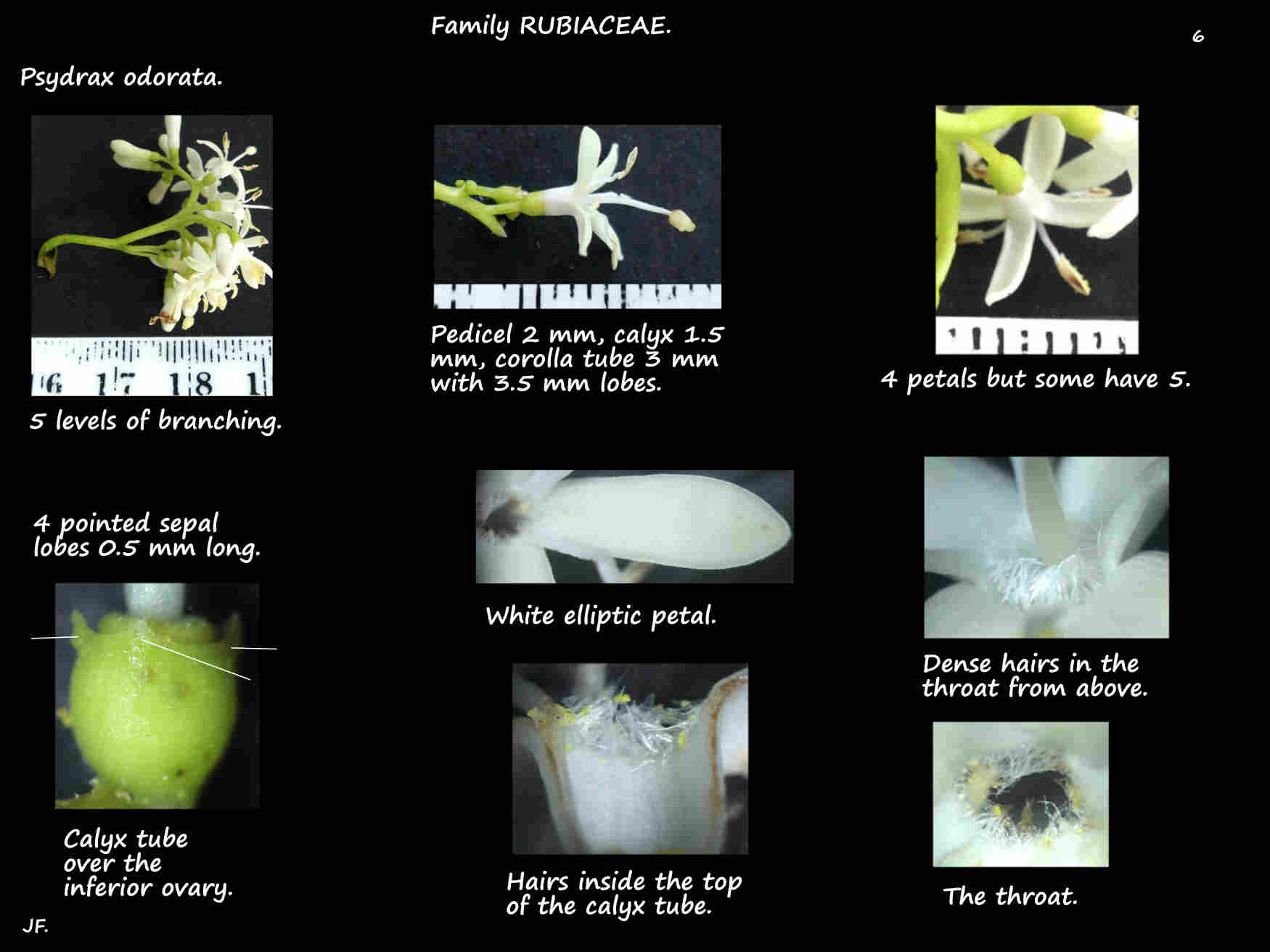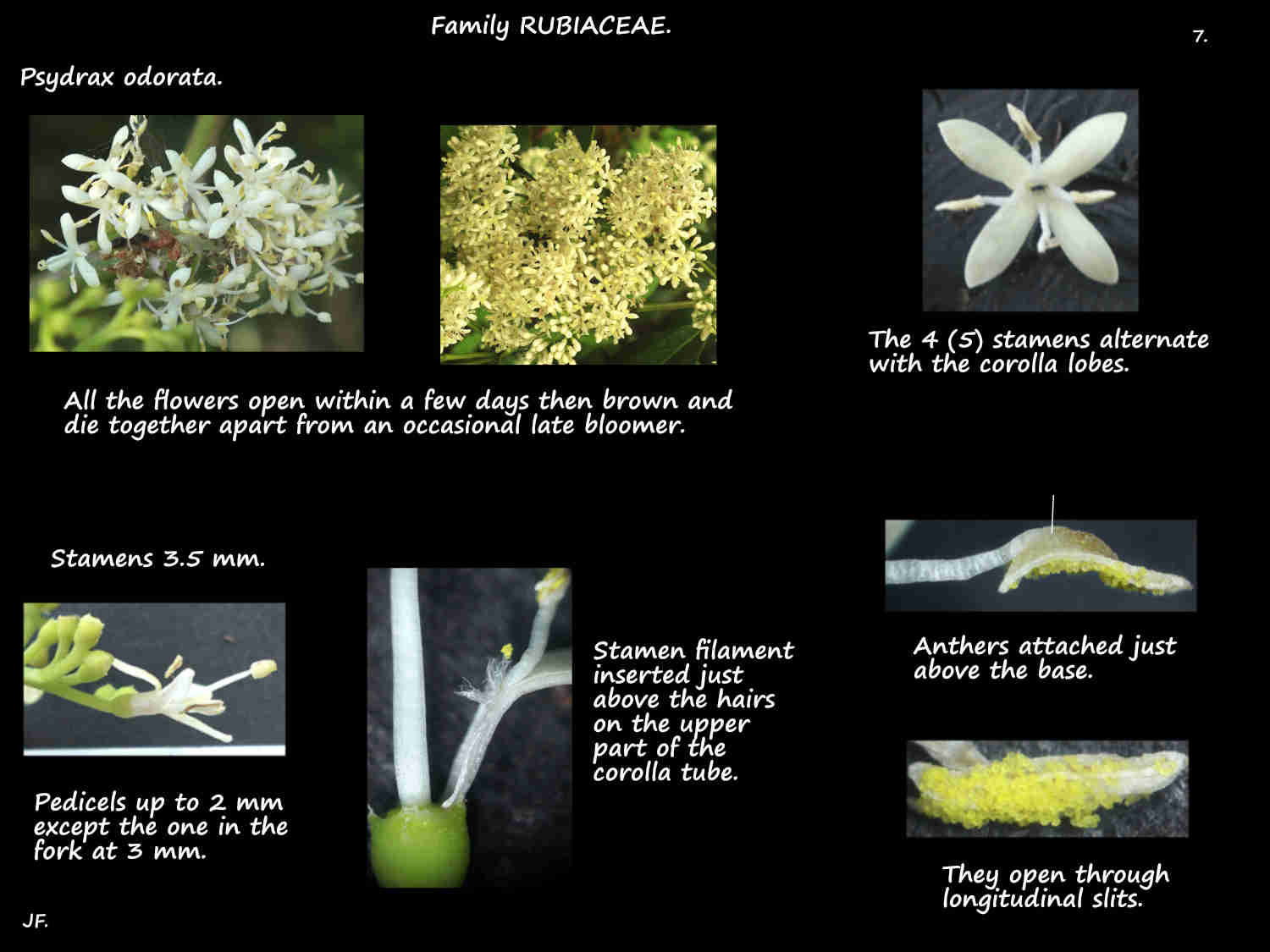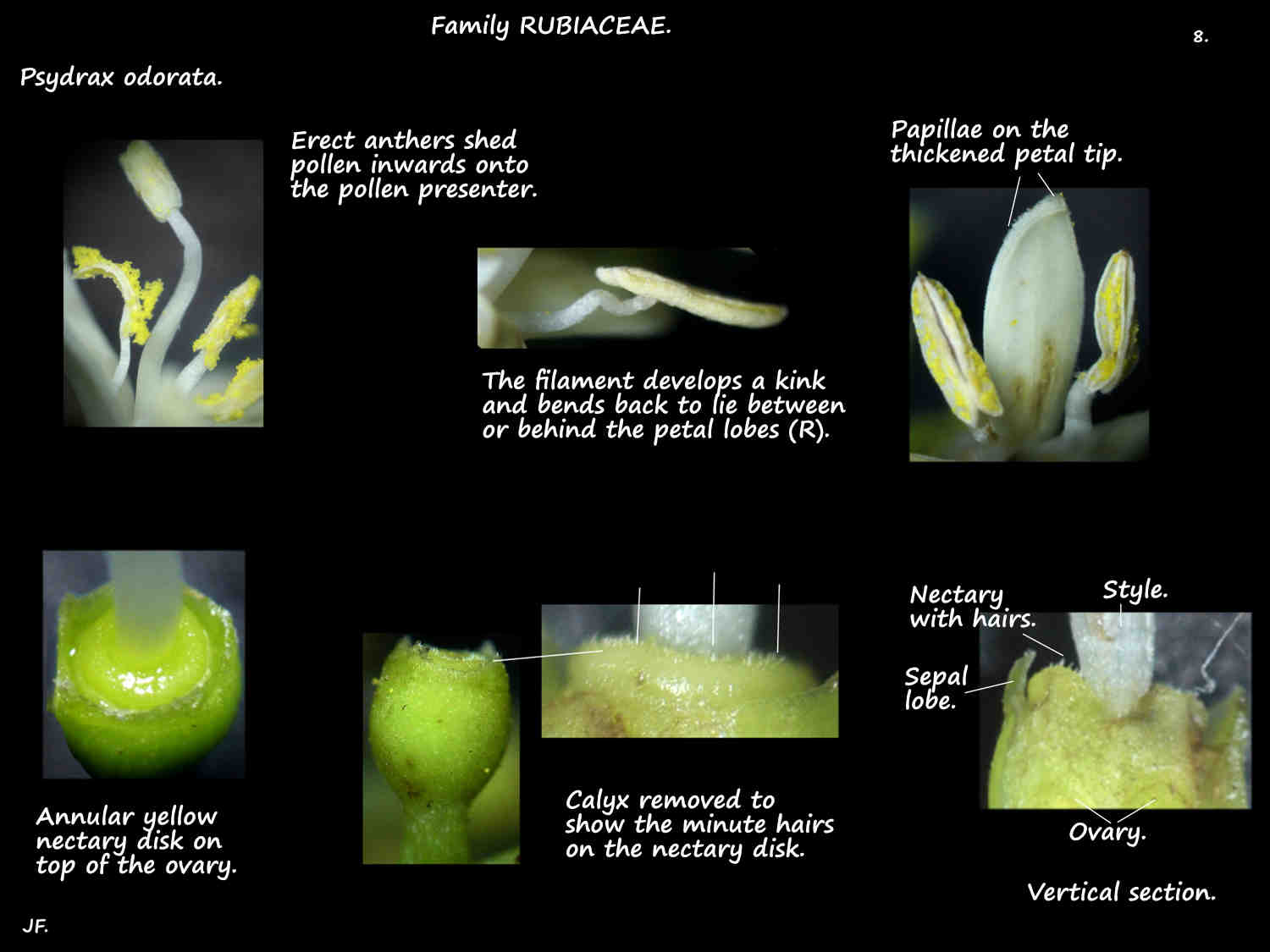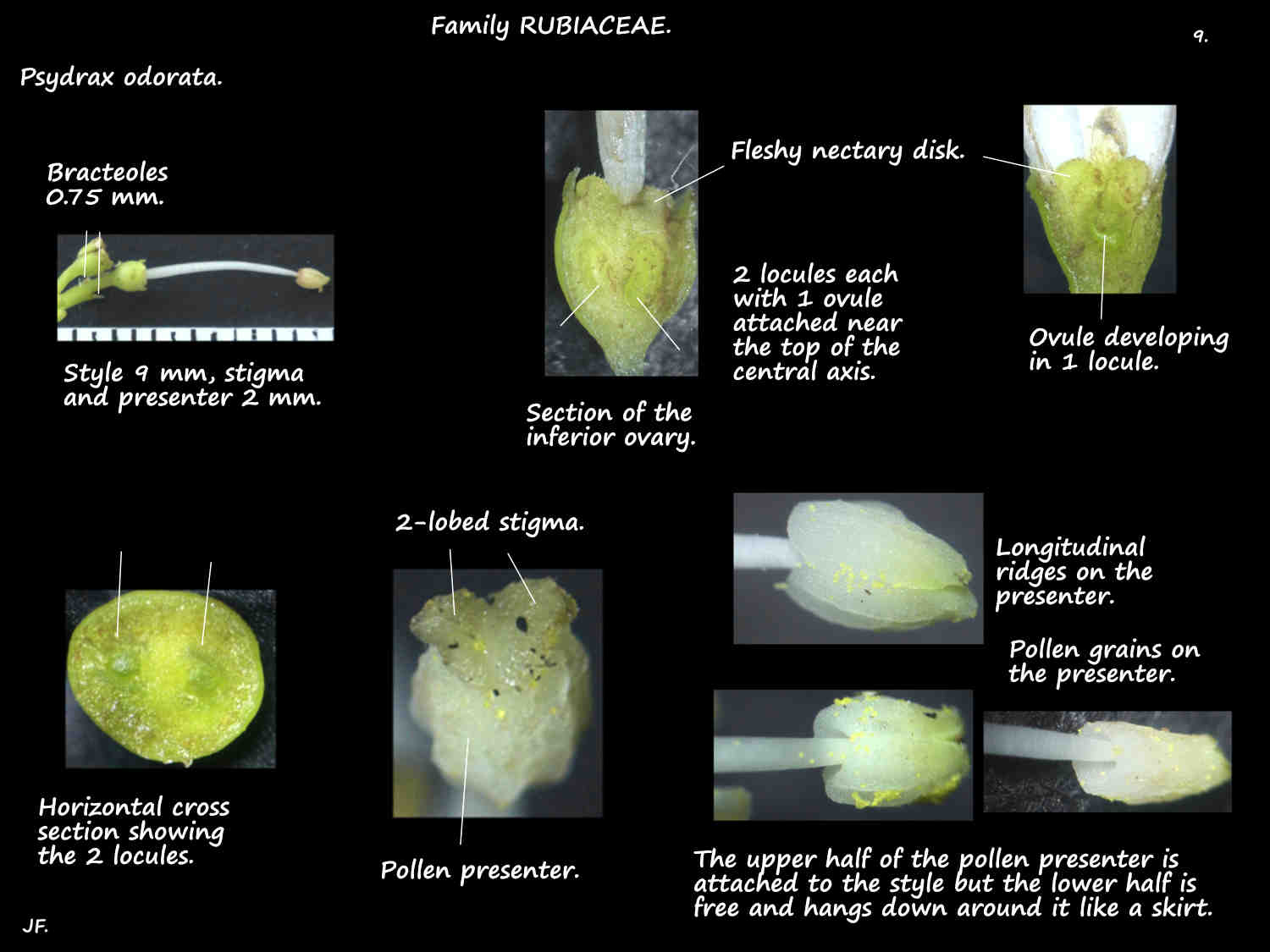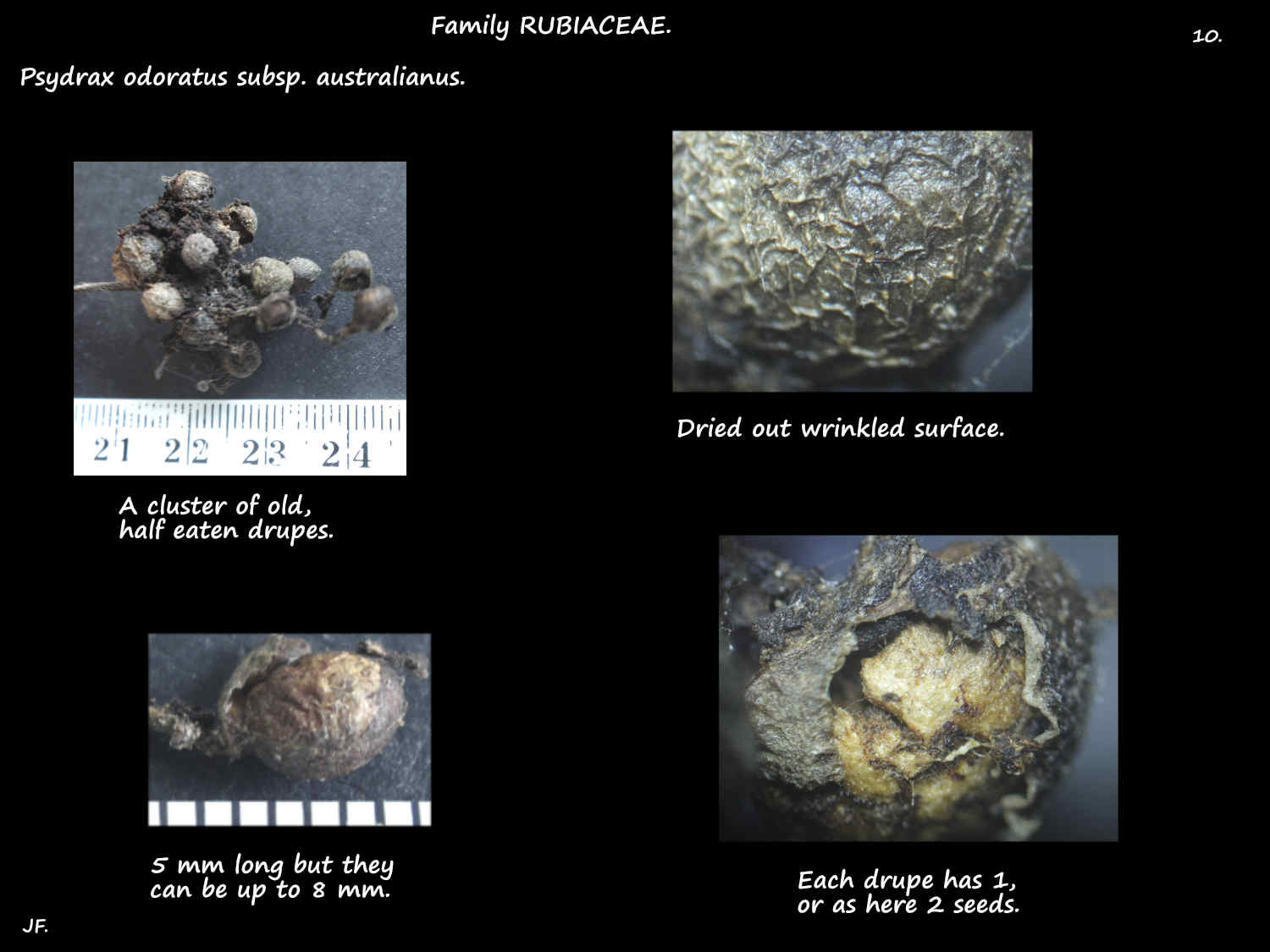Psydrax odorata.
The Shiny-leaved canthium, native to Eastern Queensland and N.S.W. has been in numerous other genera including
Canthium, Coffea, Ixora, Pavetta, Phallaria, Plectronia and Randia.
They are seen as a shrub or a small tree up to 10 or 12 m high.
The pale grey bark on the trunk has paler areas.
Small green branches may be swollen at the nodes and usually have no hairs.
The simple opposite leaves are typically under 10 cm long and 3 cm wide.
The base tapers to a petiole a few mms long.
The blades are elliptic to ovate or diamond-shaped.
There are up to 4 hairless pits (domatia) on each side of the midvein on the lower surface.
There are triangular stipules up to 8 mm long between the petiole bases.
There may be small glands (colleters), under 0.5 mm long between the stipule and the stem.
Axillary inflorescences are a dense cluster of white flowers.
The stalk (peduncle), up to 2.5 cm long branches into 2 and each of these divides into 2 etc.
Flowers on the end of each terminal branch are on pedicels around 0.5 cm long that may have a few hairs when young.
There is often a single flower, on a longer pedicel in each fork.
There are small bracts on the peduncle and bracteoles on the pedicels.
The green calyx is a 1 to 2 mm long tube with 4 or 5 lobes only 0.5 mm long.
The cylindrical corolla tube, up to 2 mm long has 4 or 5 lobes up to 5 mm long.
There are hairs in the throat.
The 4 or 5 stamens are inserted at the top of the corolla tube.
There is an inferior ovary with 2 locules and a style up to 1 cm long.
The bi-lobed stigma has a cylindrical pollen presenter below it.
The nectary disk is a ring around the base of the style.
The somewhat fleshy black fruit are a drupe up to 8 mm long.
They are laterally compressed and the sepals remain attached.
Each drupe has 1 or 2 seeds in a hard coat.
There are a few subspecies including P. odorata f. australiana also known as P. odoratus subsp. australianus.
J.F.

